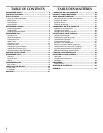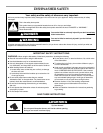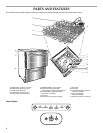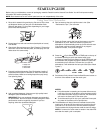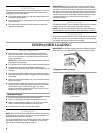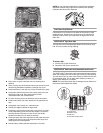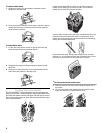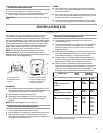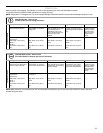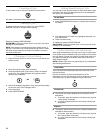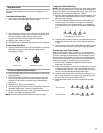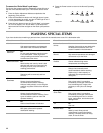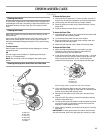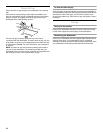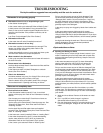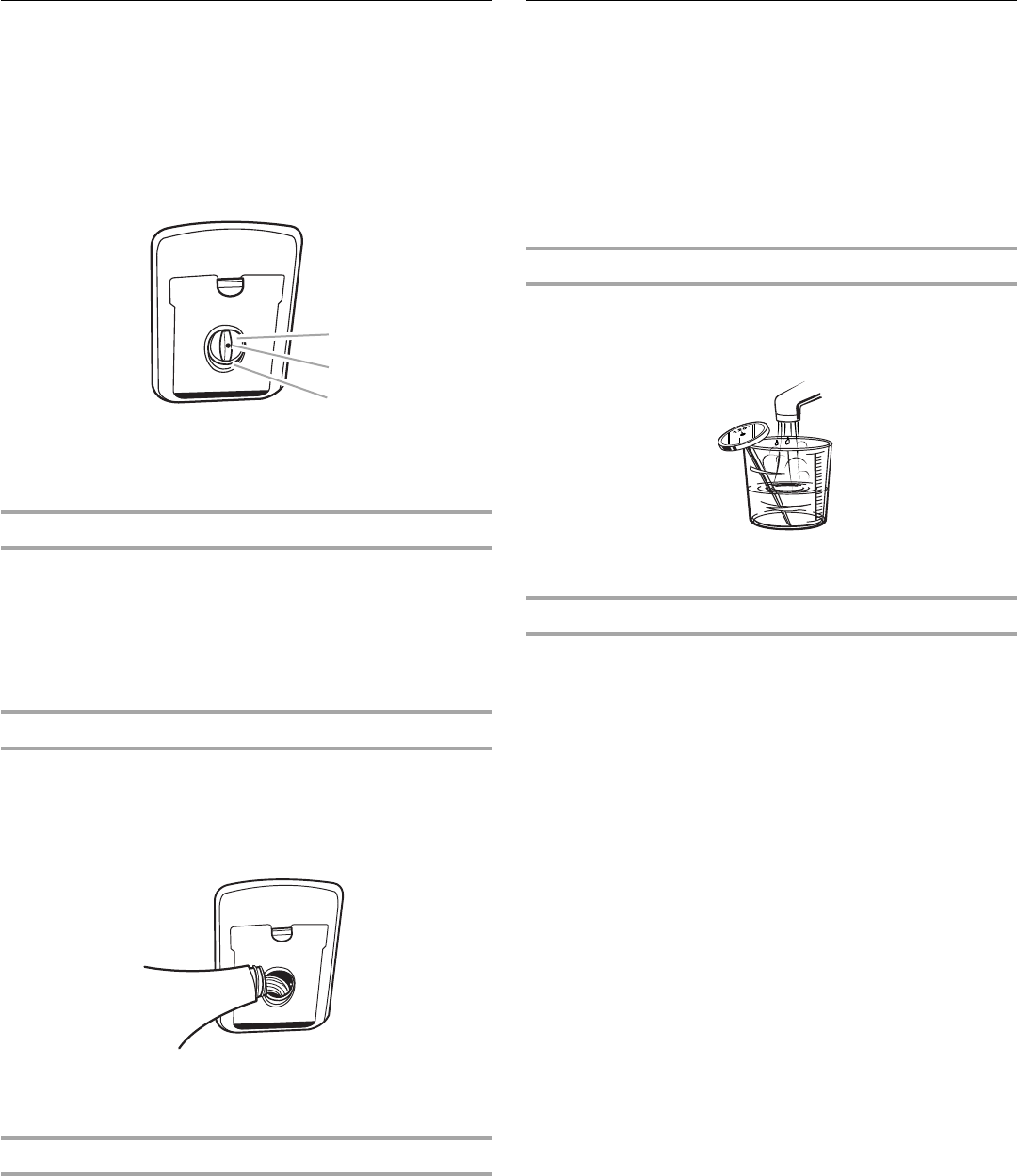
10
Rinse Aid Dispenser
The regular use of liquid rinse aid gives the best drying results.
Rinse aids keep water from forming droplets that can dry as
spots or streaks. They also help keep metal from tarnishing. They
improve drying by allowing water to drain off of the dishes during
the final rinse. Your dishwasher is designed to use a liquid rinse
aid. Do not use a solid or bar-type rinse aid.
The rinse aid dispenser is located on the front inside of the
drawer underneath the detergent dispenser.
How much rinse aid to use
The regulator may need adjusting to suit your water conditions.
The lowest setting is “1” and the highest is “5.” For hard water,
the rinse aid dispenser should be used with its setting fixed at 5.
(See “Option Selections and Adjustments” section.)
NOTE: If there is excessive foam at the end of the wash, reduce
the rinse aid dispenser setting. If dishes are wet or streaky after
drying, increase the rinse aid dispenser setting.
Filling the rinse aid dispenser
The rinse aid dispenser holds 1.7 oz (50.28 mL) of rinse aid.
Under normal conditions, this will last for about 1 to 2 months.
Try to keep it full, but be sure not to overfill it.
1. Turn the plug counterclockwise and remove.
2. Pour the rinse aid into the circular opening.
3. Take care not to spill rinse aid into the drawer. Any spills must
be wiped up to avoid excess foaming.
4. Fit the plug back into the original position.
Rinse Aid indicator
If the rinse aid indicator light is red, refill the dispenser. If the rinse
aid indicator light is not lit, there is enough rinse aid for the wash.
You do not have to wait until the dispenser is empty to refill.
Performance Tips
Hot water dissolves and activates the dishwashing detergent.
Hot water also dissolves grease on dishes and helps glasses dry
spot-free. For best dishwashing results, water should be 120°F
(49°C) as it enters the dishwasher. Loads may not wash as well if
the water temperature is too low. Water that is too hot can make
some soils harder to remove and cause certain detergent
ingredients not to function. If your water heater is located far from
the dishwasher, it may be necessary to run the hot water at the
faucet closest to the dishwasher to minimize the amount of cold
water in the water line.
To check water temperature
1. Run hot water at the faucet closest to your dishwasher for at
least 1 minute.
2. Place a candy or meat thermometer in a glass measuring
cup.
3. Check the temperature on the thermometer as the water is
running into the cup.
Additional efficiency tips
■ To save water, energy and time, do not rinse dishes before
putting them into the dishwasher.
■ Choose the cycle that describes the most difficult soil on your
dish load.
■ Do not worry about mixed loads. Any item that is dishwasher
safe can be washed using any cycle. (See “NOTES:” in the
“Loading Silverware Basket” section.)
■ Use a delay feature to run your dishwasher during off-peak
hours. Local utilities recommend avoiding heavy usage of
energy at certain times of day. (See “Option Selections and
Adjustments.”)
■ Use a rinse aid to improve drying.
■ Use cycles or options that add extra heat to the wash or rinse
portion of the cycle for better performance.
■ Run your dishwasher with full loads. Run a rinse cycle after
meals until the dishwasher is full.
■ If your home is equipped with a water softener, you may want
to avoid starting the dishwasher during the regeneration of
the softener, since this may contribute to poor wash
performance.
A.Rinse aid plug
B.Rinse aid indicator light
C.Rinse aid dispenser
A
B
C



